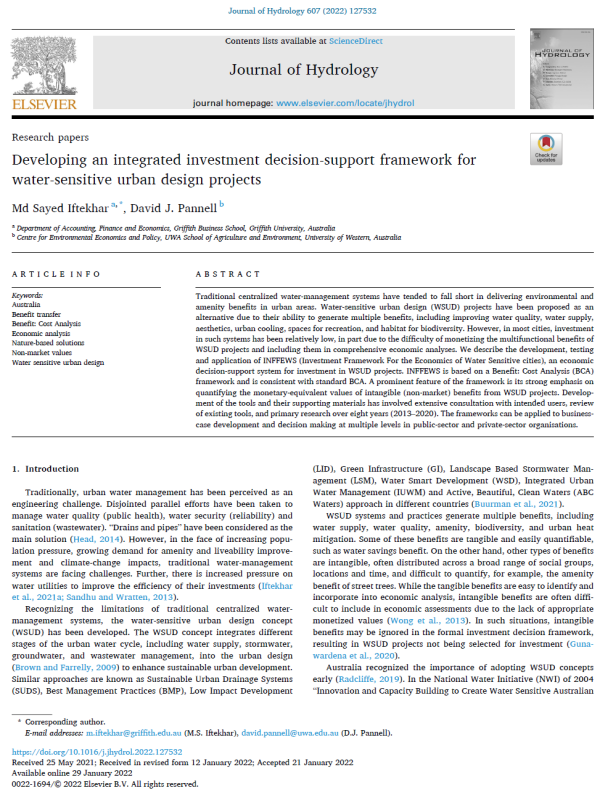365. Investment decision-support framework for water-sensitive urban design
I’ve got a new paper out in the Journal of Hydrology: “Developing an integrated investment decision-support framework for water-sensitive urban design projects” by Md Sayed Iftekhar and David J.Pannell. It will be freely available (without a subscription to the journal) for 50 days.
Access the paper here: https://authors.elsevier.com/c/1eYgh_WGi3MKh
Highlights
- Water sensitive cities projects can generate many non-market intangible benefits.
- Business cases for such projects could be stronger if non-market benefits are included.
- In Australia, a comprehensive economic framework to develop business cases has been lacking.
- The Investment Framework For the Economics of Water Sensitive cities (INFFEWS) is discussed.
- INFFEWS provides on a robust comprehensive Benefit: Cost Analysis framework.
Abstract
Traditional centralized water-management systems have tended to fall short in delivering environmental and amenity benefits in urban areas. Water-sensitive urban design (WSUD) projects have been proposed as an alternative due to their ability to generate multiple benefits, including improving water quality, water supply, aesthetics, urban cooling, spaces for recreation, and habitat for biodiversity. However, in most cities, investment in such systems has been relatively low, in part due to the difficulty of monetizing the multifunctional benefits of WSUD projects and including them in comprehensive economic analyses. We describe the development, testing and application of INFFEWS (Investment Framework For the Economics of Water Sensitive cities), an economic decision-support system for investment in WSUD projects. INFFEWS is based on a Benefit: Cost Analysis (BCA) framework and is consistent with standard BCA. A prominent feature of the framework is its strong emphasis on quantifying the monetary-equivalent values of intangible (non-market) benefits from WSUD projects. Development of the tools and their supporting materials has involved extensive consultation with intended users, review of existing tools, and primary research over eight years (2013–2020). The frameworks can be applied to business-case development and decision making at multiple levels in public-sector and private-sector organisations.
